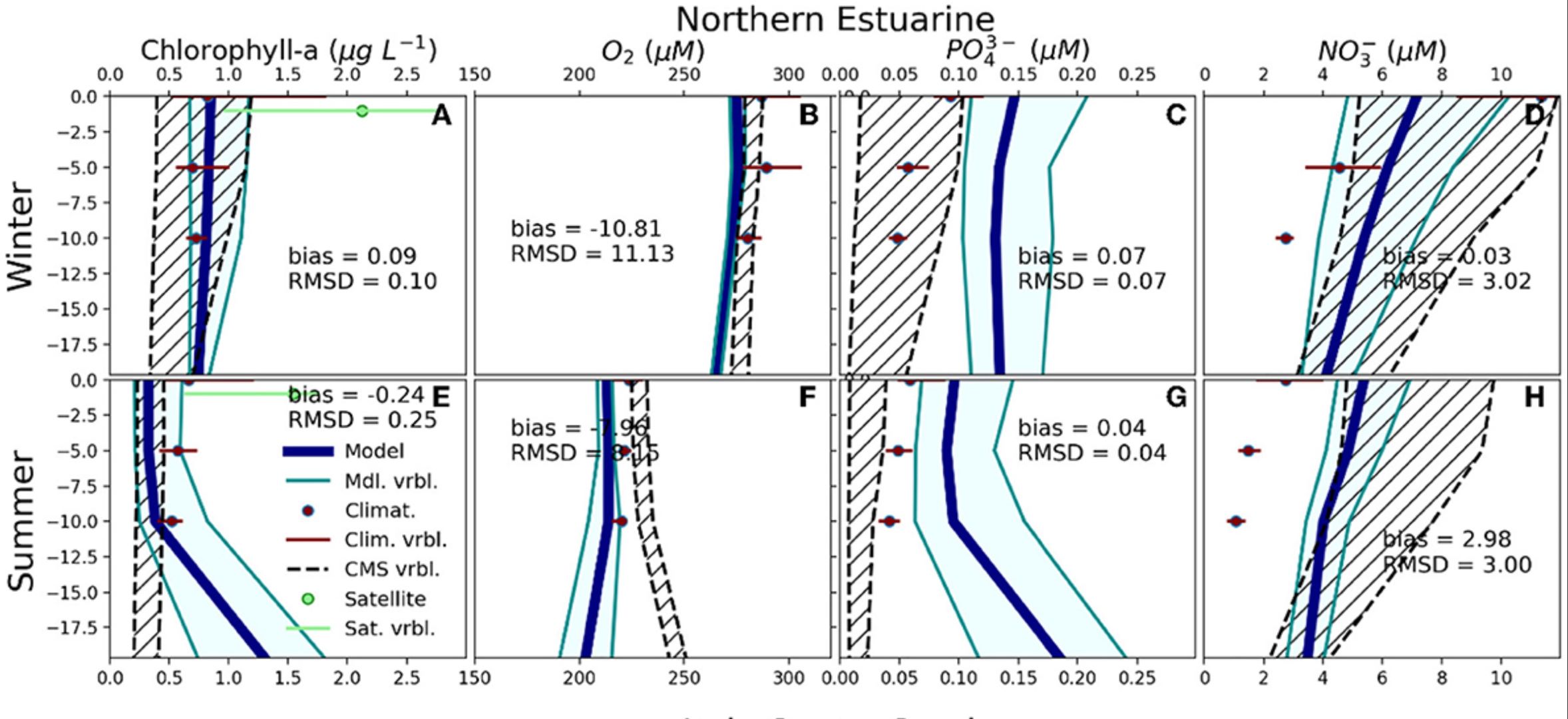Eutrophication climatology to decipher the consequences of climate change in the Adriatic Sea
The user organisation
AdriaClim (Climate change information, monitoring and management tools for adaptation strategies in Adriatic coastal areas) is a research project funded by the Italy-Croatia Interreg Cooperation Programme supporting the cooperation among the two European Member State territories overlooking the Adriatic Sea. The AdriaClim network consists of 19 partners from Italian and Croatian universities, research institutes, national and local organisations working to monitor, assess and protect the environment and human health. Lasted from January 2020 to June 2023, AdriaClim supported the development of science-based regional and local climate change adaptation plans based on up-to-date meteorological and oceanographical information. These were acquired through newly implemented observing and modelling systems for the Adriatic Sea.
In order to achieve this, a state-of-the-art information system was first set up and made accessible and usable for all stakeholders in the Adriatic coastal area. Place-based and evidence-based measures to combat the effects of climate change were then defined in close cooperation with local stakeholders. The information system was based on current meteorological and oceanographic data obtained from newly introduced observation and modelling systems for the Adriatic.
Challenges facsed by the user
Despite international and European efforts to tackle climate change and mitigate the negative effects such as extreme weather events, rising sea levels, coastal erosion, flooding and many others that have been jeopardising our Planet, we are far from keeping this huge environmental crisis under control. Coming back is not yet possible: adaptation measures are urgently needed to face the emergencies and build a climate resilient Europe, as stated in the European Climate Law and in the new EU Climate Adaptation Strategy. Maritime regions are the most affected by climate change and are therefore the first actors in understanding climate change effects and developing mitigation strategies.
Considering the Adriatic Sea, a major threat to the ecosystem is the human-induced changes in river flows associated with agricultural practices and climatic rainfall trends. These changes are known to have significant impacts on nutrient loading and marine biogeochemistry in regions affected by estuaries. Nevertheless, investigating such impacts is a new endeavour for the Adriatic Sea. Up to now, predictions of future changes have only been derived from pioneering research using 1D models at certain sites or larger-scale 3D models.
EMODnet services used
In the framework of the AdriaClim project, researchers of the University of Bologna and the Euro-Mediterranean Center on Climate Change in Italy used EMODnet Chemistry climatologies to develop a high-resolution 3D biogeochemical model at the Adriatic scale, forced by projections of atmosphere, hydrology and ocean circulation between 1992 and 2050, under emission Representative Concentration Pathway (RCP) scenario 8.5. The results of the model were then analysed for two time periods, 1992–2011 and 2031–2050, for ecoregions with different trophic conditions, taking into account a number of Essential Ocean Variables (EOVs): temperature, oxygen concentration, concentration of chlorophyll-a, inorganic nitrate and phosphate, phytoplankton biomass, pH and net primary productivity. The analysis led to a scenario for the near future of the Adriatic Sea with regard to changes in biogeochemical dynamics due to climate change, and their impact on marine food web structure and important economic sectors such as fisheries.
To verify the ability of the model to provide realistic data, the climatological winter, summer and annual profiles of chlorophyll-a, nitrate, phosphate and oxygen in the Adriatic Sea were compared with those provided by the EMODnet Chemistry climatology in the Mediterranean from 1969 to today. In particular, the EMODnet Chemistry climatologies used were: Mediterranean Sea DIVA 4D moving 6-year seasonal analysis of: 1) dissolved inorganic nitrogen (DIN); 2) chlorophyll-a; 3) dissolved oxygen; and 4) water body phosphate.
Impact of EMODnet
The information provided by this new high-resolution 3D biogeochemical model based on EMODnet Chemistry climatologies allows the stakeholders to understand how potential long-term decreases in the regimes of the Northern Adriatic Rivers could affect the marine ecosystem and its goods and services in the future. According to the projections, the Adriatic basin will be affected by oligotrophication, acidification and oxygen depletion in the coming decades, together with progressive warming and salinisation. Oligotrophication will be particularly intense in the shallow regions of the North Adriatic Basin by 2031–2050, due to a significant decrease in river discharge projected for the rivers of the Po Plain.
The study warns that this scenario raises doubts about the long-term resilience of the food web structure of ecosystems in the northern Adriatic, which have long been supported by high trophic conditions, as well as the side effects on associated economic activities.
The fit with observations noticeably improves when we compare the model's vertical profiles of chlorophyll-a with the EMODnet climatology for each marine ecoregion identified in the classification, especially during winter. Additionally, the difference between the surface concentration of chlorophyll-a determined from satellites, EMODnet, and the models in two of the ecoregions of the Adriatic Sea, i.e. Northern Estuarine and Italy Center South, is noteworthy. This suggests a possible overestimation of colour-based satellite estimates in estuarine areas characterised by high sediment load
Media

